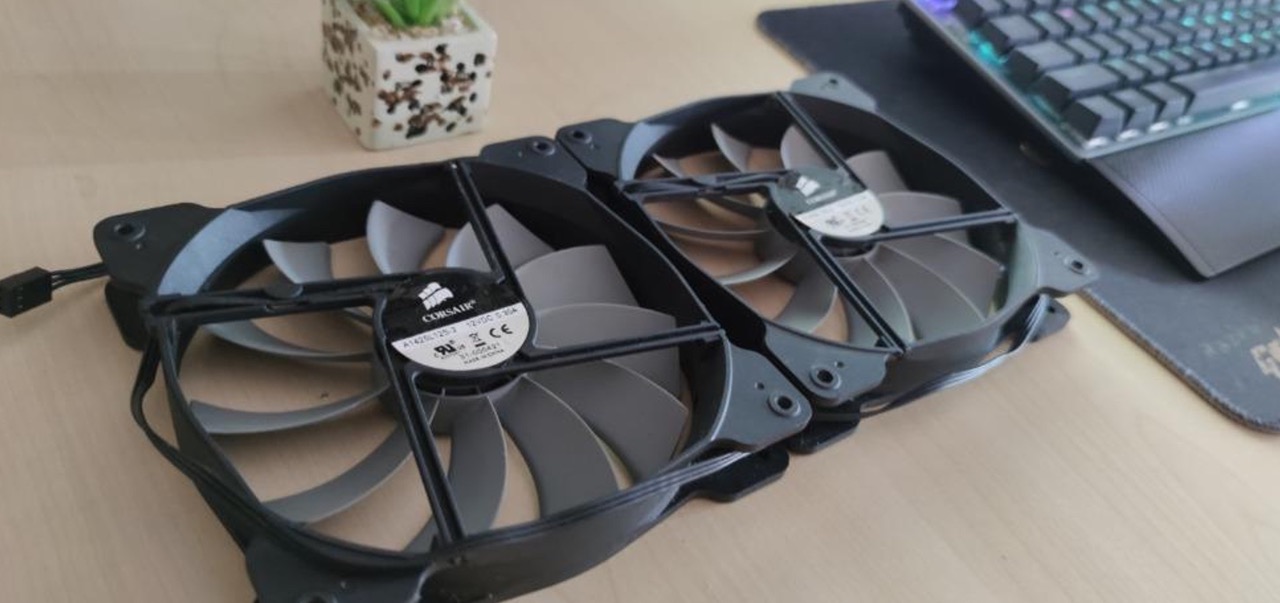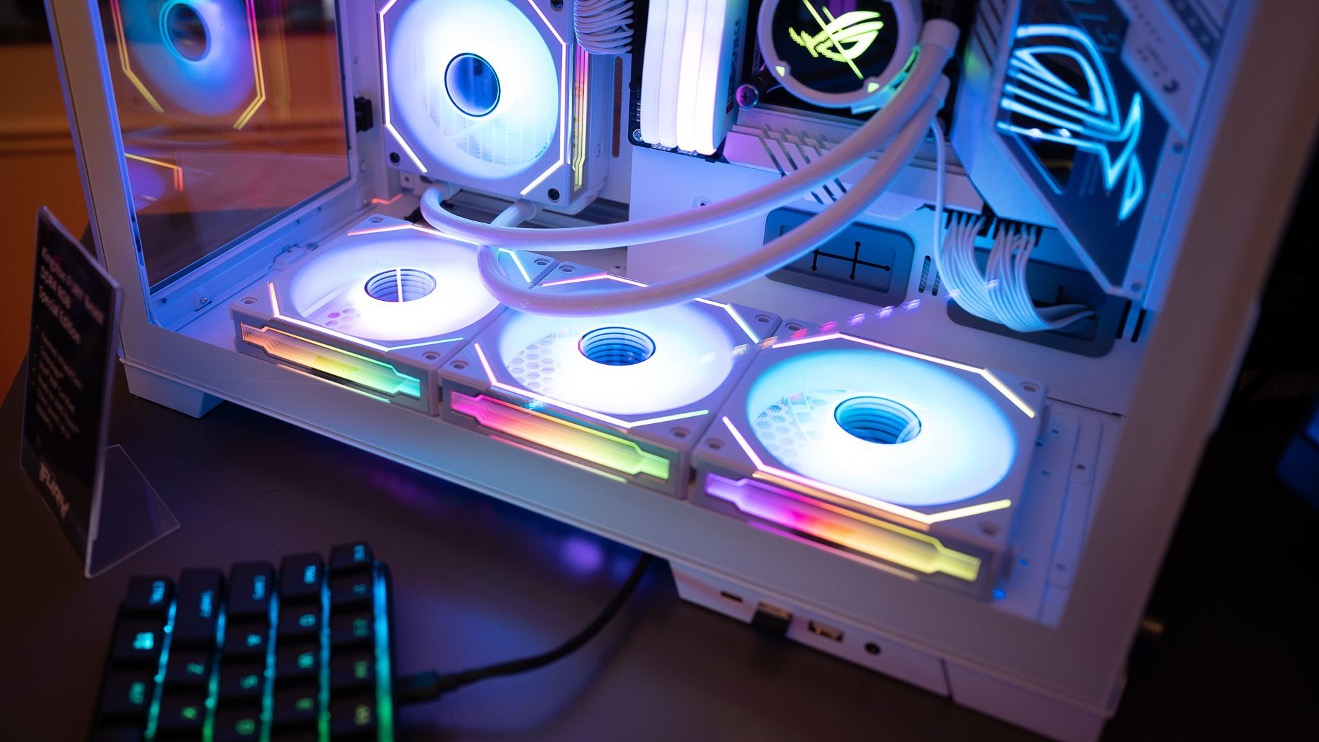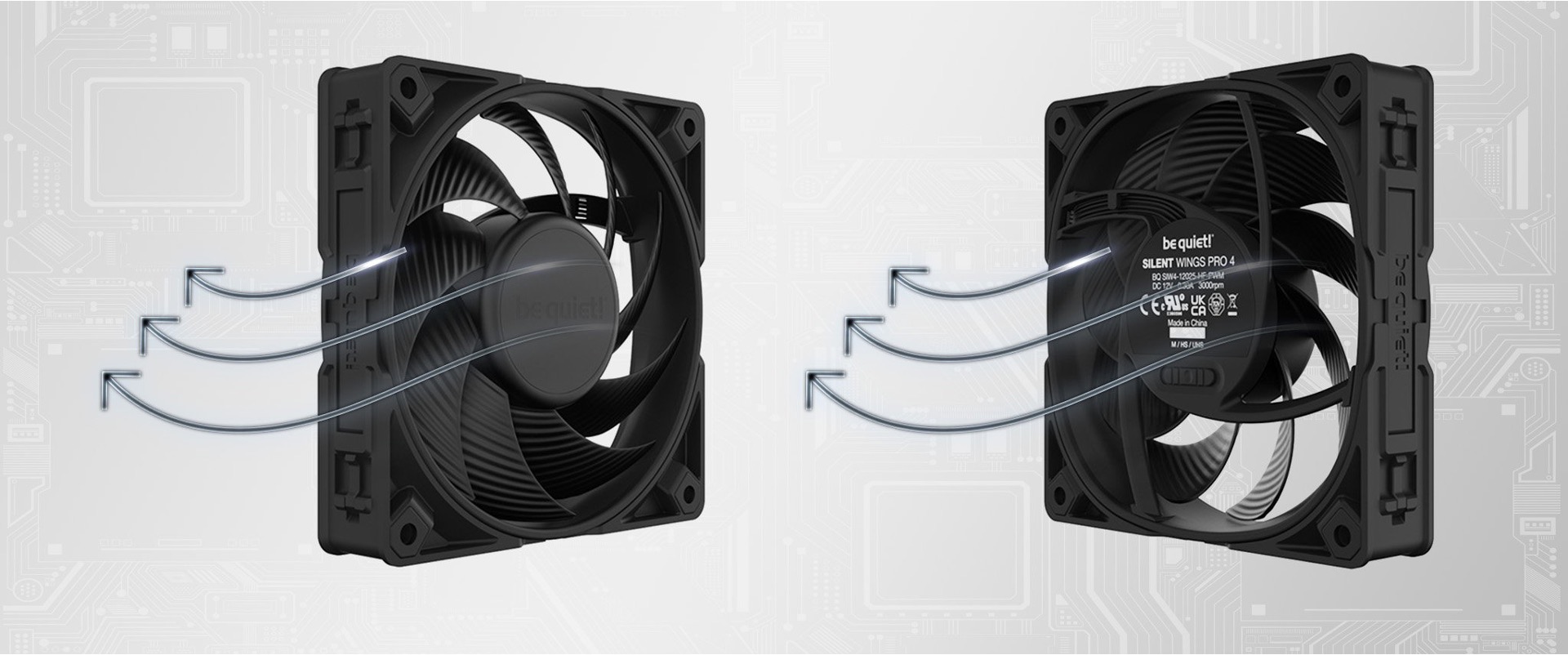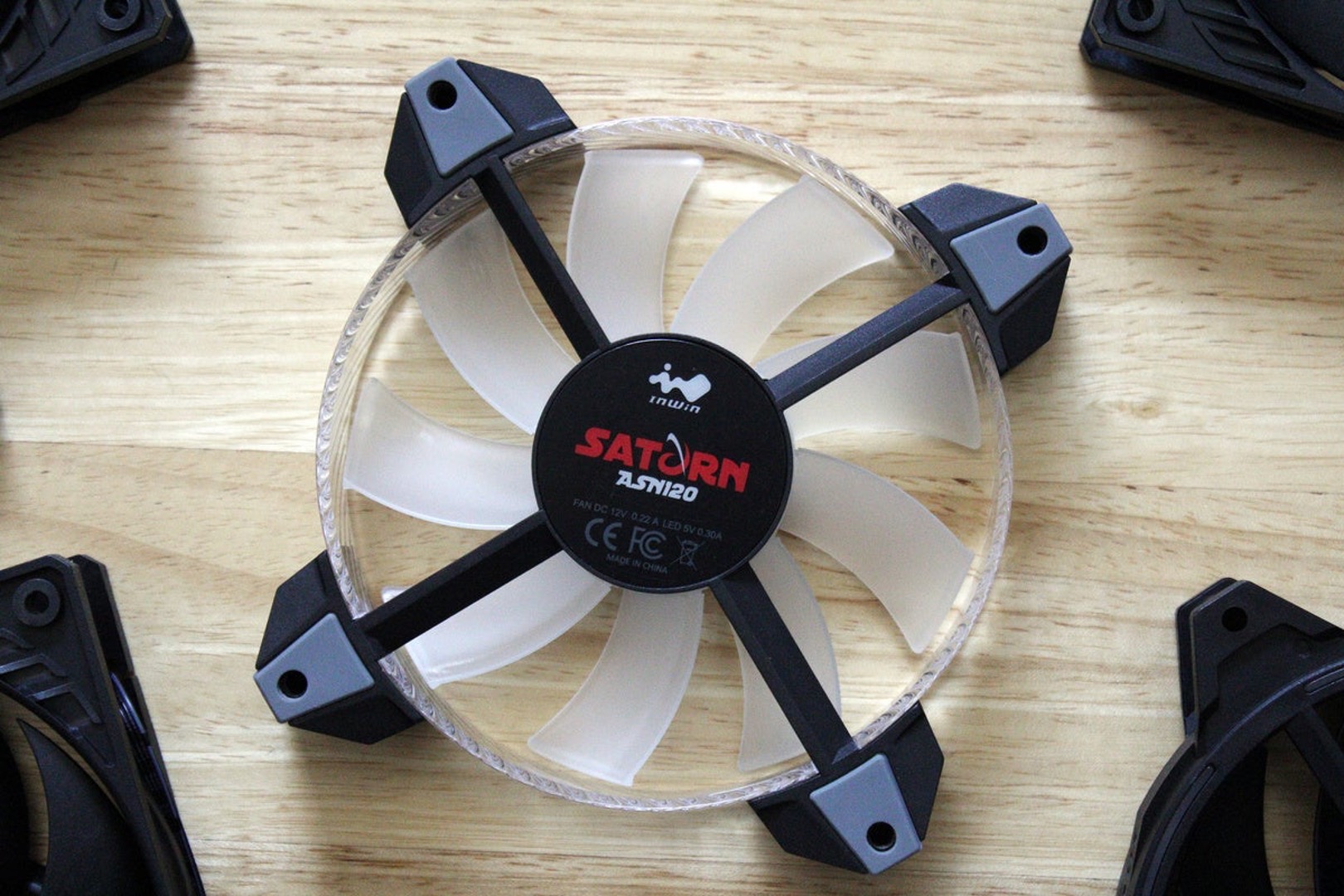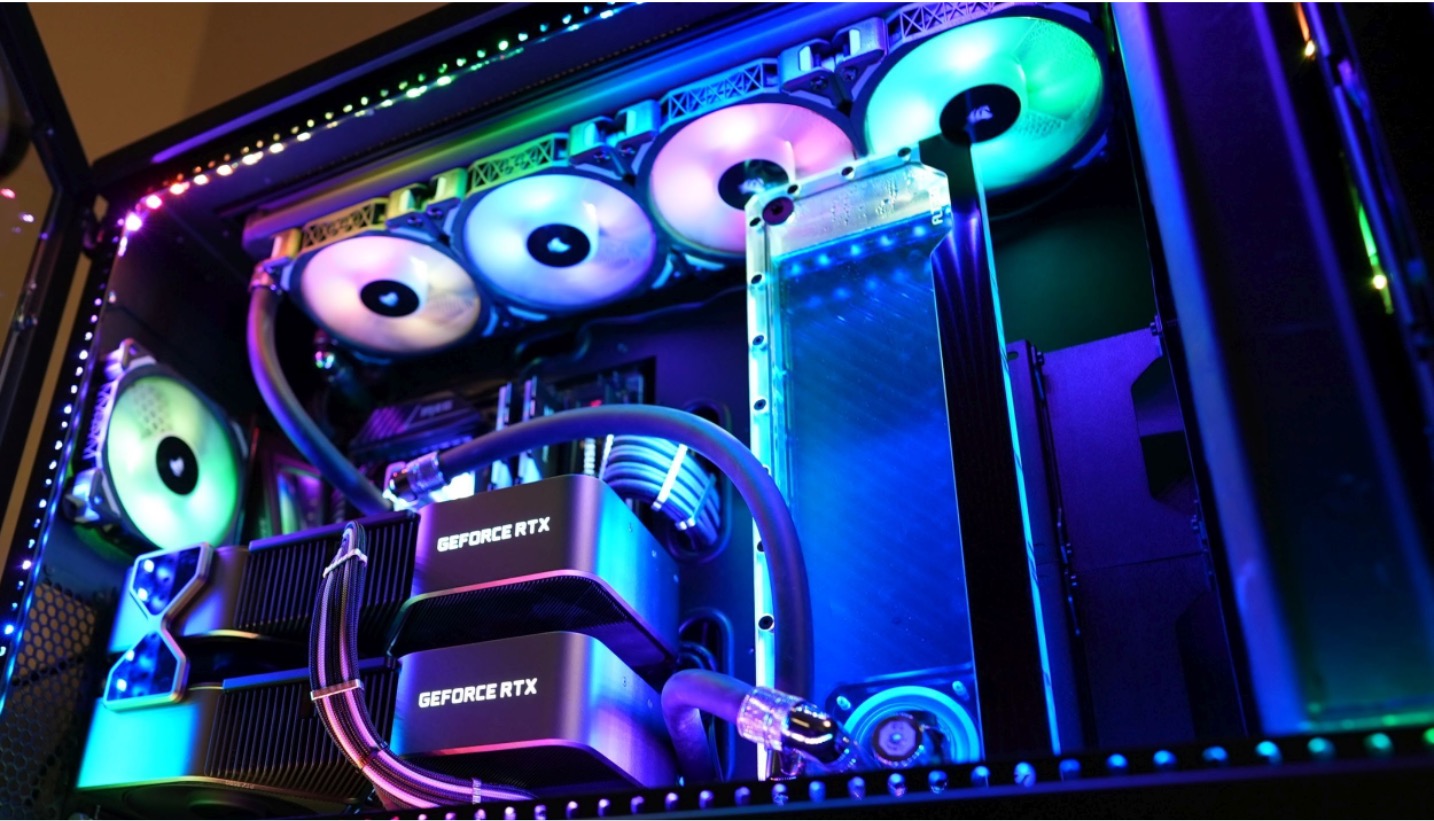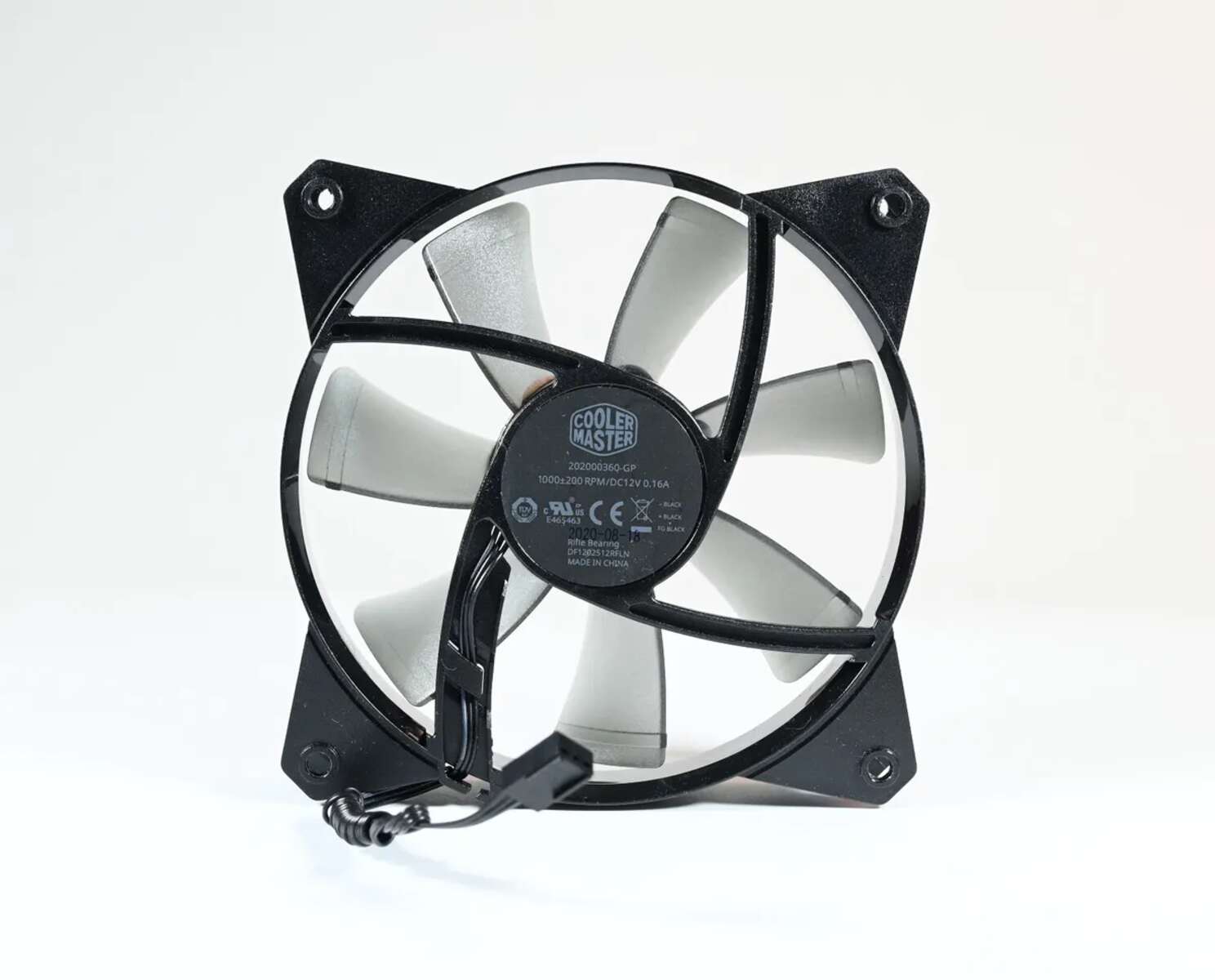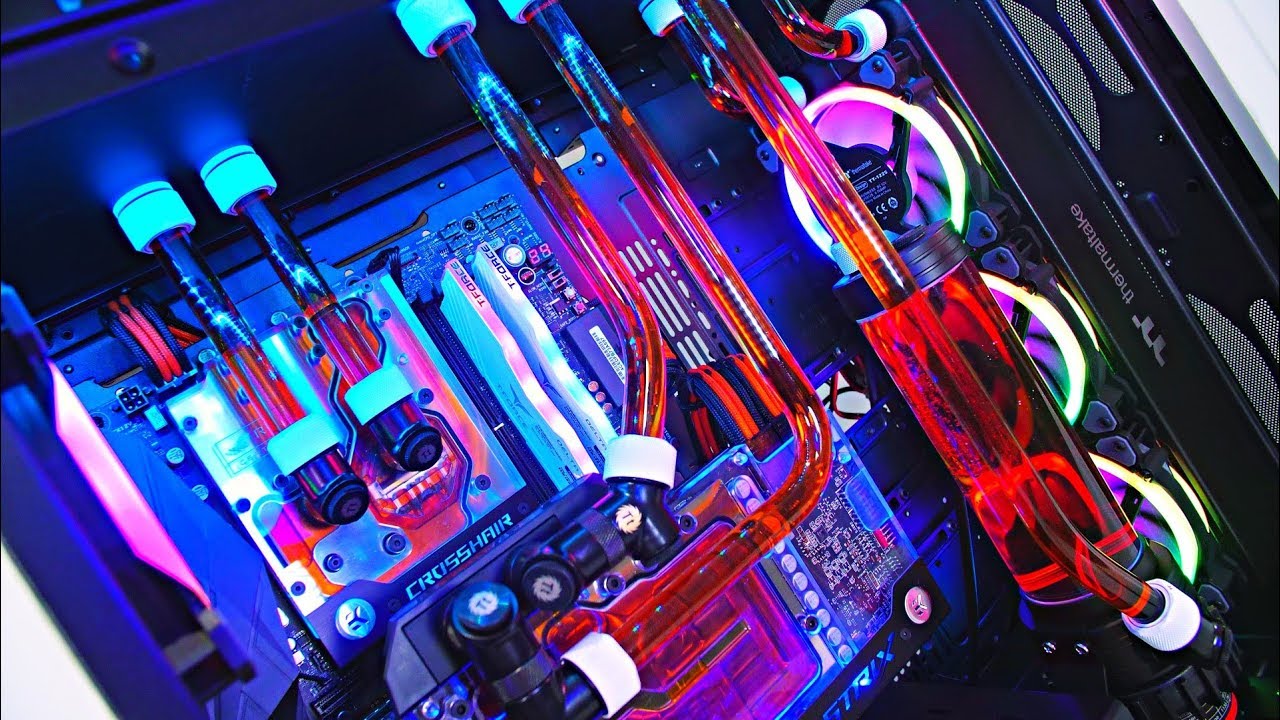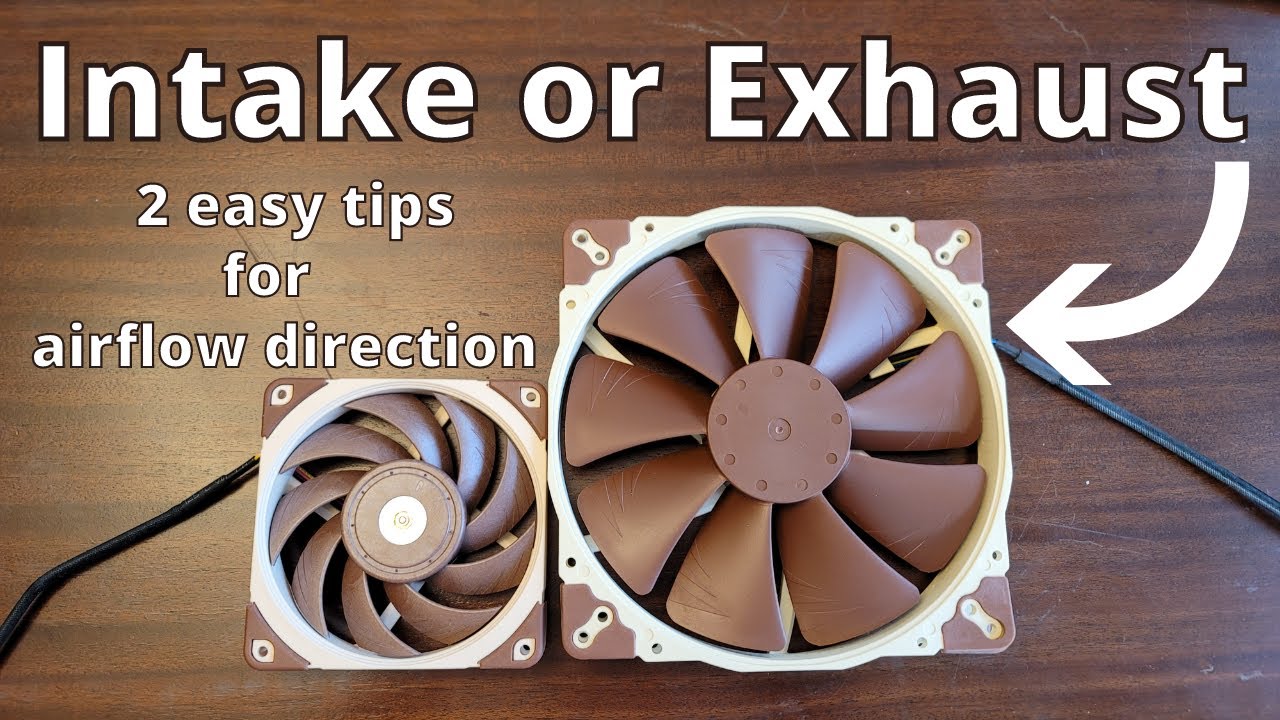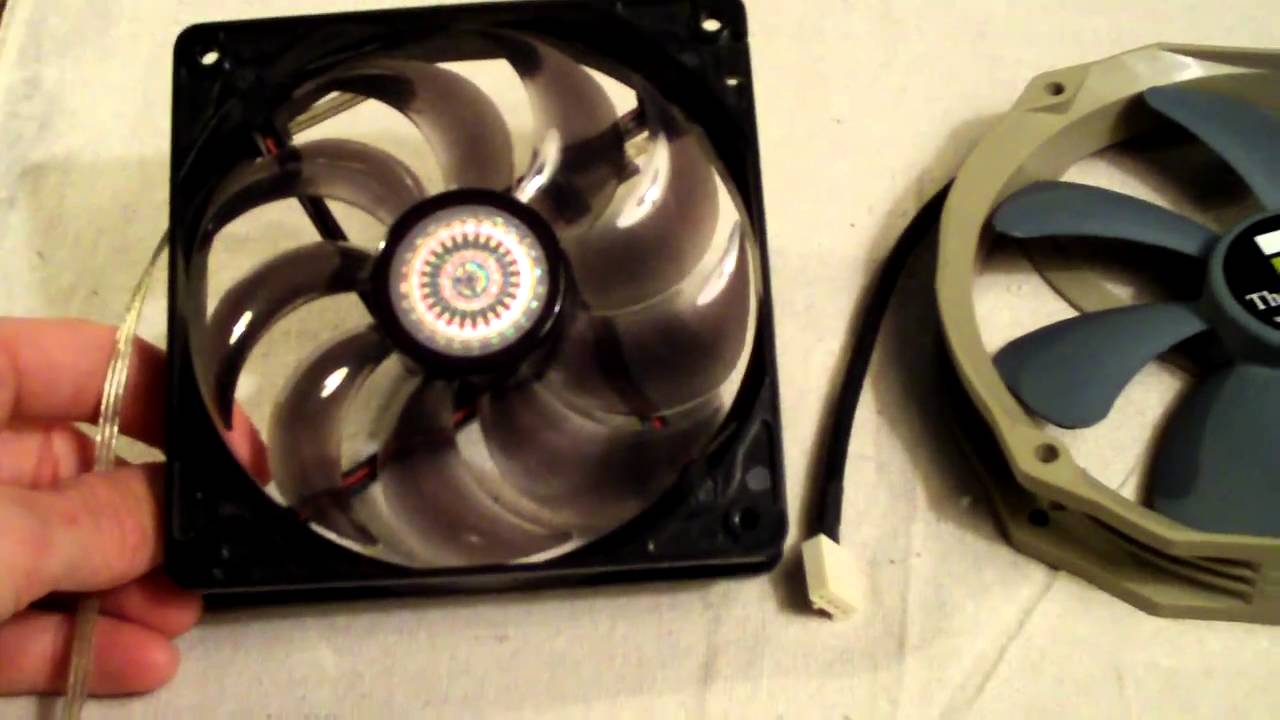Introduction
When building a computer, it’s easy to prioritize the components like the CPU, GPU, and RAM, but one integral aspect often goes overlooked: case fans. These small, often unsung heroes play a crucial role in maintaining the overall health and performance of your PC by regulating its temperature.
In a nutshell, case fans are responsible for circulating fresh air and expelling hot air from the internal components of your computer case. This airflow is vital for preventing overheating, which can lead to performance issues, system instability, and even permanent hardware damage.
However, one question that frequently arises among PC enthusiasts is: Which direction should the air flow? The answer isn’t as straightforward as it may seem, as there are various factors to consider when determining the optimal airflow direction for your specific setup.
In this article, we’ll delve into the intricacies of case fan airflow and explore the importance of correct airflow direction. We’ll discuss how to determine the direction of airflow, the factors that can affect it, and the benefits of ensuring proper airflow. Additionally, we’ll delve into common airflow configurations and troubleshoot any potential airflow issues you may encounter.
By the end of this article, you’ll have a solid understanding of the role case fans play in PC cooling and the necessary steps to achieve optimal airflow within your computer system.
Basics of Case Fans
Before delving deeper into the world of case fan airflow, it’s essential to familiarize ourselves with the basics of case fans. Case fans are small, usually square-shaped devices that are mounted inside the computer case to circulate air. They consist of a frame, blades, and a motor that powers the rotation of the blades.
Case fans generate airflow by creating a pressure difference within the computer case. They draw in fresh, cooler air from the surroundings and direct it towards the internal components of the PC. This helps to dissipate heat generated by the CPU, GPU, power supply, and other components.
When it comes to choosing case fans, there are a few key considerations to keep in mind. Firstly, fan size plays a crucial role in determining its performance. Common fan sizes include 80mm, 120mm, and 140mm, with larger fans generally producing higher airflow at lower noise levels.
Secondly, the fan speed, measured in rotations per minute (RPM), affects the amount of air moved by the fan. Higher RPM fans can move more air but tend to produce more noise compared to their slower counterparts.
Furthermore, the number of case fans you install in your computer case depends on various factors, such as the size of the case, the heat generated by the components, and the level of cooling required. It’s common to have intake fans at the front or bottom of the case and exhaust fans at the rear or top to ensure efficient airflow.
Lastly, it’s important to consider the type of bearing used in the fan. The two common types are sleeve bearings and ball bearings. Sleeve bearings are more affordable but generally have a shorter lifespan. Ball bearings, on the other hand, are more durable and reliable but come at a higher cost.
Understanding the basics of case fans is crucial for making informed decisions when it comes to selecting and optimizing the airflow in your computer system. In the next section, we’ll explore the significance of airflow direction and how to determine it for your case fans.
Importance of Airflow Direction
Proper airflow direction is crucial for maintaining optimal cooling performance within your computer case. Without proper airflow, the internal components can become overheated, leading to reduced performance, system instability, and potentially permanent damage to the hardware.
When the air flows in the correct direction, it facilitates the movement of cool air towards the internal components, while expelling hot air away from them. This creates a continuous cycle that helps to regulate the temperature and maintain a stable operating environment.
If the airflow direction is incorrect, it can result in hot spots within the case, where certain components receive inadequate cooling. This can lead to localized overheating, potential thermal throttling, and decreased performance of your computer.
Furthermore, poor airflow can contribute to the accumulation of dust and debris on the internal components, hindering their functionality and increasing the risk of heat build-up. Over time, this can lead to further performance degradation and potential long-term damage.
It’s worth noting that different computer cases and component configurations may require specific airflow patterns to ensure optimal cooling. Factors such as the placement of the components, cable management, and the number and size of case fans can all influence the airflow direction and overall cooling efficiency.
By understanding the importance of airflow direction, you can take the necessary steps to ensure that your case fans are properly configured to maximize cooling efficiency and protect your computer system.
Determining the Direction of Airflow
Determining the direction of airflow for your case fans requires careful observation and consideration of the components and their positioning within the computer case.
One common approach is to follow the general rule of having intake fans at the front or bottom of the case and exhaust fans at the rear or top. This configuration allows for the cool air to be drawn in from the front or bottom and expelled out from the rear or top, creating a natural flow of air throughout the case.
To determine the current airflow direction of your case fans, you can perform a simple observation test. Turn on your computer and locate the fan blades of each case fan. Place your hand or a piece of tissue near the fan blades and observe the airflow direction. You should feel a breeze or see the tissue being blown away from the fan if the direction is correct.
If the observed airflow direction doesn’t match the desired direction, it’s time to make adjustments. Most case fans come with reversible blades, allowing you to switch the direction of airflow by reversing the fan’s orientation. Alternatively, some fans may have small arrow indicators printed on the frame, indicating the correct airflow direction.
When reconfiguring the airflow direction, it’s important to consider any obstacles that may impede the smooth flow of air. Ensure that cables, drive cages, or any other components are not blocking the path of the air movement. Proper cable management can help create a clear and unobstructed pathway for the airflow.
Remember, the ultimate goal is to achieve a balanced airflow that allows for the efficient cooling of all components within the computer case. Take the time to experiment with different fan configurations and placements to find the optimal direction for your specific setup.
Next, we’ll explore the various factors that can affect the airflow direction within your computer case.
Factors Affecting Airflow Direction
Several factors can influence the airflow direction within your computer case. Understanding these factors is essential for optimizing the cooling efficiency of your system.
1. Case Design: The design and layout of your computer case can significantly impact the airflow direction. Some cases are specifically designed for front-to-back airflow, while others may have a top-to-bottom or side-to-side airflow pattern. It’s important to consider the case design when determining the optimal direction for your case fans.
2. Component Placement: The placement of the components within the case can affect the airflow direction. Components such as the CPU, GPU, and power supply generate a significant amount of heat. Ensuring that they are positioned in a way that facilitates the flow of cool air towards them and the expulsion of hot air away is crucial for efficient cooling.
3. Cable Management: Proper cable management plays a vital role in maintaining efficient airflow. Cables that obstruct the path of the airflow can disrupt the flow and create pockets of stagnant air or hotspots. Organizing and securing cables away from the fans and components can help promote smooth airflow throughout the case.
4. Fan Placement and Configuration: The number, size, and placement of case fans can impact the airflow direction. Intake fans, usually located at the front or bottom of the case, draw in cool air, while exhaust fans, positioned at the rear or top, expel hot air. It’s important to strike a balance between intake and exhaust to maintain a positive pressure within the case.
5. Dust Filters: Dust filters, if present, can affect the airflow direction. Dust filters are typically placed on the intake fans to prevent dust from entering the case. It’s essential to ensure that the dust filters are clean and not excessively clogged, as this can restrict the airflow and hinder cooling efficiency.
By considering these factors and making appropriate adjustments, you can ensure that the airflow direction within your computer case is optimized for efficient cooling. Next, let’s explore the benefits of maintaining the correct airflow direction.
Benefits of Correct Airflow Direction
Maintaining the correct airflow direction within your computer case offers numerous benefits in terms of cooling efficiency and overall system performance. Here are some key advantages:
1. Effective Heat Dissipation: Proper airflow ensures that hot air is efficiently expelled from the case, preventing the buildup of heat around critical components. This helps to maintain lower temperatures and reduces the risk of thermal throttling, which can lead to decreased performance and system instability.
2. Component Longevity: By maintaining optimal temperatures, correct airflow direction can extend the lifespan of your computer components. Excessive heat can cause wear and tear over time, leading to premature hardware failure. Adequate cooling helps to mitigate this risk and prolongs the durability of your components.
3. Improved Performance: When components operate at lower temperatures, they can deliver more consistent and reliable performance. Absence of excessive heat can help avoid thermal throttling, which can negatively impact CPU and GPU performance. Therefore, maintaining the correct airflow direction can contribute to overall system efficiency and responsiveness.
4. Reduced Dust Accumulation: Proper airflow direction can help reduce the accumulation of dust within the computer case. By directing the airflow in a way that expels hot air and promotes the inflow of fresh air, dust particles are less likely to settle on critical components. This can help prevent clogged heatsinks, fans, and other components, minimizing the risk of heat buildup and maintaining optimal cooling efficiency.
5. Quieter Operation: Balanced airflow can contribute to quieter operation by allowing fans to operate at lower speeds. When the airflow is efficient and temperatures are well-regulated, fans don’t need to work as hard to maintain optimal cooling. This leads to a quieter computing experience without sacrificing performance.
By ensuring correct airflow direction within your computer case, you can reap these benefits and ensure the longevity and efficient operation of your system. In the next section, we’ll explore some common airflow configurations to further enhance your understanding of case fan airflow.
Common Airflow Configurations
There are several common airflow configurations that PC enthusiasts utilize to achieve efficient cooling within their computer cases. Let’s explore some of these configurations:
1. Front-to-Back Flow: This is a popular airflow configuration where intake fans are mounted at the front of the case, drawing in cool air. The hot air is then expelled by the exhaust fans at the rear. This ensures a steady, unidirectional flow of air through the case, effectively cooling the components.
2. Bottom-to-Top Flow: In this configuration, intake fans are positioned at the bottom of the case, while exhaust fans are located at the top. This setup allows cool air to be drawn in from the bottom, rising through the components, and then expelled out through the top. It works well for cases with a separate compartment for the power supply.
3. Side-to-Side Flow: Some cases are designed to have intake fans on one side and exhaust fans on the other side. This configuration promotes effective cooling of components by drawing in cool air from one side and expelling hot air from the other.
4. Positive Pressure: Positive pressure is achieved by having more intake fans than exhaust fans. This configuration ensures that more cool air is entering the case than hot air exiting, effectively reducing the amount of dust and preventing air from entering through unfiltered gaps.
5. Negative Pressure: On the contrary, negative pressure is achieved by having more exhaust fans than intake fans. While this configuration can help expel hot air quickly, it may also draw in unfiltered air from gaps and increase the accumulation of dust within the case.
It’s important to note that the ideal airflow configuration can vary depending on your specific case, component layout, and individual cooling requirements. Experimenting with different configurations and monitoring temperatures can help you determine the most effective configuration for your system.
Lastly, keeping the case fans and components clean through regular maintenance is essential to maintain the efficiency of the chosen airflow configuration. Now that we’ve explored common airflow configurations, let’s move on to troubleshooting any airflow issues you may encounter.
Troubleshooting Airflow Issues
Despite your best efforts to configure your case fans and optimize airflow, you may still encounter issues that hinder efficient cooling. Here are some common airflow issues and troubleshooting steps to address them:
1. Hotspots in the Case: If you notice certain areas of your case are significantly hotter than others, it may indicate an airflow issue. Check for obstructions like cables or excessive dust that may be blocking the airflow. Consider repositioning your case fans or adding additional fans to ensure proper cooling in those areas.
2. Excessive Dust Buildup: If your components are accumulating dust quickly, it may indicate poor airflow or inadequate dust filtration. Clean the dust filters and ensure they are properly seated. Check for any gaps in the case that may allow dust to enter and seal them if necessary. Consider upgrading your dust filters or adding more intake fans with dust filters for better air purification.
3. High Component Temperatures: If your CPU or GPU temperatures are consistently high, it may indicate insufficient cooling. Ensure that the heatsinks and fans are properly seated and making proper contact. Consider upgrading to more powerful fans, adjusting fan speeds, or utilizing liquid cooling options to improve cooling in heavily taxed components.
4. Noisy Fan Operation: If your case fans are producing excessive noise, it could be a sign of airflow restriction or a fan issue. Check for obstructions, adjust cable management, and ensure proper fan mounting. Cleaning fans regularly can also help reduce noise caused by dust buildup. Consider replacing fans if they are faulty or have surpassed their lifespan.
5. Inadequate Cooling for Overclocking: If you’re experiencing stability issues when overclocking, it may be due to insufficient cooling. Ensure that your case fans are powerful enough to handle the increased heat generated by overclocked components. Consider adding additional fans or upgrading to more efficient cooling solutions like liquid cooling to maintain adequate temperatures during overclocking.
6. Unbalanced Airflow: If you have more exhaust fans than intake fans or vice versa, it can lead to imbalanced airflow. Adjust the number and placement of your fans to create a more balanced flow of air. Aim for a positive pressure configuration to minimize dust accumulation and maintain optimal cooling efficiency.
By troubleshooting and addressing these airflow issues, you can optimize cooling performance and maintain the health and longevity of your computer system.
Conclusion
In conclusion, understanding and optimizing the airflow direction within your computer case is crucial for maintaining efficient cooling and protecting your components. Case fans play a vital role in circulating fresh air and expelling hot air, preventing overheating and ensuring optimal performance.
By considering factors such as case design, component placement, cable management, and fan configurations, you can determine the best airflow direction for your specific setup.
Benefits of maintaining the correct airflow direction include effective heat dissipation, prolonging component longevity, improved system performance, reduced dust accumulation, and quieter operation.
Common airflow configurations such as front-to-back, bottom-to-top, side-to-side, positive pressure, and negative pressure offer different approaches to achieving optimal cooling based on your case and component layout.
If you encounter airflow issues, troubleshooting steps such as identifying hotspots, addressing excessive dust accumulation, addressing high component temperatures, reducing fan noise, optimizing for overclocking, and balancing airflow can help resolve the problem.
Remember to regularly clean your case fans, dust filters, and components to maintain optimal airflow and cooling efficiency.
By following these guidelines and taking proactive measures, you can ensure that your computer system remains cool, reliable, and performs at its best for years to come.







